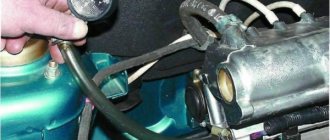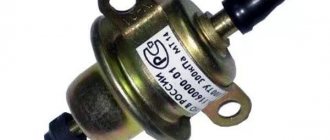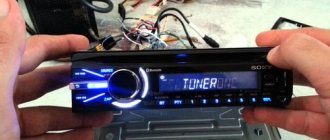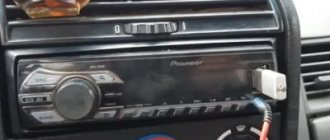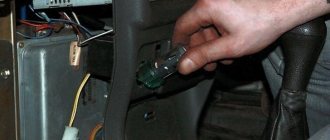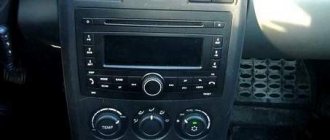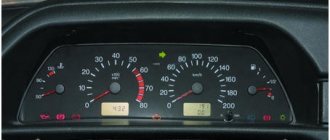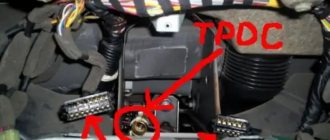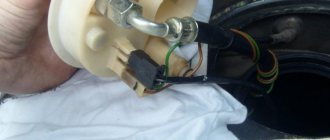Reason 1: Inappropriate file system format
The most commonly reported problem occurs due to improper formatting of the media. The fact is that most radios only recognize FAT16 and FAT32 systems, while other options, like NTFS, either do not work or require additional effort. You can learn more about the format of a flash drive for a car radio from the material below.
Read more: Formatting a flash drive for a radio
The head unit does not see the flash card at all
If your flash drive does not play music in the car because the radio refuses to see it, there can be only two reasons:
- The radio is faulty;
- The removable disk is faulty.
It’s easy to verify that a flash card is working; just test it on another device.
Why might the car radio not work?
- The USB port is broken. This happens if you handle it carelessly. Also, dust or moisture may get in there.
- In the radio, the contacts on the microcircuit responsible for playback via the USB port have come loose.
- The wiring inside the audio system is damaged;
- The keys used to switch to playback from external drives are out of order;
- The audio system is broken. Accordingly, at the same time, it does not work completely - it does not read CDs, does not play the radio, does not connect to a smartphone via Bluetooth;
- Player software failure.
The last problem can be solved by resetting the radio settings to factory settings. The instructions will help you find out how to do this specifically on your device. All other problems can only be fixed by a specialist.
Reason 2: Wrong music format
We cannot exclude problems with the songs themselves that you put on the flash drive - MP3 with a bitrate of up to 320 kb/s is suitable for car radios, while most lossless formats (FLAC, ALAC) or compressed without loss of quality (OGG) radios are most likely won't be able to read. Therefore, the solution to the problem is to download the tracks in the correct format or convert it to MP3.
Read more: Converting APE, FLAC, M4B, AAC, M4A formats to MP3 How to record music on a flash drive so that the radio can read it
Why doesn't the radio read a flash drive with music via USB in the car?
Car multimedia players are equipped with decoders that play music and songs recorded in a compressed format on a removable storage device. An external device is connected via a USB port located on the front or in the glove box. If the radio does not read the flash drive with music, then the user can independently find the cause of the malfunction and restore the functionality of the products.
Reason 4: There are Russian letters in the track title or tags
Many car players do not support the Cyrillic alphabet, which is why, at best, song names are displayed in the form of unreadable hieroglyphs, and at worst, the music is not recognized at all. The situation is similar with tracks whose tags contain Cyrillic. The way out of this situation is simple - rename the files using only English letters, as well as look at the tags and correct them if necessary, which the article at the link below will help you with.
Read more: How to edit MP3 file tags
Removing and editing mp3 tags
First, let's look at a couple of ways to remove ID3 tags from mp3 files. Two large groups can be distinguished:
- The program is an mp3 tag editor.
- Standard Windows tools for editing tags.
The first conditional group includes all programs that can edit and remove tags from music files. Let's highlight the two most popular of them:
- Mp3tag is a free program for editing ID3 tags of mp3 files and other metadata of audio formats.
- AIMP Tag Editor is a utility built into the popular audio player of the same name that allows you to batch remove tags from a large number of files
As for standard tools for working with metadata of musical compositions, all functionality is built into the Windows Explorer menu. To change or delete tags of an mp3 file in Windows , we just need to open the Properties of this file or group of files from the menu that opens when you right-click, go to the Details tab and at the bottom of the window click on the link Remove properties and personal information. In the new window, we check the Delete the following properties of this file checkbox, then check the required items and click the OK button. ID3 tags of the mp3 file have been removed.
At the same time, by removing tags from a composition, we do not lose the quality of the audio recording, do not interfere with the structure of the audio track, and, of course, do not affect the bitrate. The only obvious disadvantage of deleting audio file tags is the inability to display the track name and artist on the display of the head unit, if such a feature is implemented in software.
However, there are two things to understand here:
- If your radio displays the file name as the main information, then you do not lose anything by removing ID3 tags.
- Often in mp3 files downloaded from the Internet, ID3 tags are filled with absolutely meaningless information, such as the source site of the file, the year the song was released, or even a comment from the user who shared the file. Cleaning up this data is unlikely to be a serious omission on our part.
In any case, everyone decides for themselves what is preferable to them: quickly remove all tags from the list of songs at once or find the very problematic tag that interferes with the standard functioning of the audio system and get rid of it.
to contents
Reason 5: The size of the flash drive is too large
The source of the problem may also be the storage medium: old car radios and some modern budget ones are unable to work with flash drives larger than 8 GB. The solution to this problem is obvious - replacing the drive with a less capacious one, or creating a partition of a supported size on it.
Read more: Creating partitions on a flash drive
Rules for recording music on USB media
In order to avoid the previously listed difficulties, when recording music you should adhere to the following simple rules:
- It is best to use a USB drive with a small capacity of up to 8 GB.
- When writing in FAT32 format, most often there are no problems with reading.
- It is advisable to place all files in the root directory, or in folders located in the root directory itself.
- Choose the format for mp3 or wav files.
- Before recording, the USB drive must be checked for viruses.
- Do not charge other devices via the USB socket.
Taking into account all the problems we have listed, you can easily select modern data storage devices suitable for your audio system. And this will allow you to enjoy not only driving, but also your favorite music while traveling.
Perhaps few car accessories are progressing as quickly as the radio. Before motorists had time to get used to CDs (everyone had long since forgotten about cassette tapes), digital media came to replace them in the form of a flash drive for the radio. As soon as we sorted them out, players with a DVD screen appeared - an image was added to the sound. True, progress is accompanied by many questions about electronic media. For example, why doesn't the system read what is written on the flash drive? And this happens quite often.
Reason 7: Hardware problems
The most serious cause of the problem in question is a hardware defect. Diagnostics occurs according to the following algorithm:
- First of all, check the flash drive: connect it to the computer and make sure it is working.
- Find a media that is known to work and is compatible, put music on it and connect it to the car radio. If in this case there is no response, you can definitely diagnose problems with the USB port.
- Some car audio systems have a built-in diagnostic tool that, if there is a problem, displays an error on the indicators or display. Examples:
- “ERROR 19” – file or directory names contain Russian letters;
“ERROR 23” – incorrect file system;
- “CHECK USB” – problems with the corresponding port.
Also, some manufacturers have their own error display system, so you will need a user manual to decipher the codes.
If the flash drive malfunctions, it should be replaced, and problems with the radio require a visit to the service center.
We are glad that we were able to help you solve the problem. In addition to this article, there are 11,987 more instructions on the site. Add the Lumpics.ru website to your bookmarks (CTRL+D) and we will definitely be useful to you. Thank the author and share the article on social networks.
Describe what didn't work for you. Our specialists will try to answer as quickly as possible.
What errors can the radio show, and how to fix them?
To begin with, you should carefully look at what exactly your radio shows when you insert a flash drive into the USB connector. Most likely, certain messages will be displayed on the screen. If there is no reaction to the inserted flash drive, the USB connector itself may be faulty. But this is a fairly rare case. To check this, you can try to play music from this flash drive in the radio in another car. Most often, there will still be a certain inscription with an error.
Very often the following messages appear:
- Error 23. You need to check and change the file system of the flash drive to match your radio. It can be FAT 32 or NTFS.
- PROTECT error. Your radio does not have a codec that would allow you to play these files. You may need to download music in a different format or reflash the radio.
- CHECK USB error. This error occurs when there is a problem with the USB port itself. This is usually due to breakdowns of the radio, which can be fixed at a service center.
- Error 19. This warning occurs if the files on the flash drive have names in Cyrillic, but the radio cannot read them. Also, using error 19, the radio reports that the hierarchy is too complex, the presence of folders that cannot be opened, and so on.
Of course, these are not universal mistakes. In most cases, you will have to find the instructions for your radio yourself to get more information about what problems caused the difficulties in playing music. The instructions must contain a complete list of possible messages that the radio tape recorder gives to the owner. You can read about built-in standard radios on specialized forums for your car brand.
